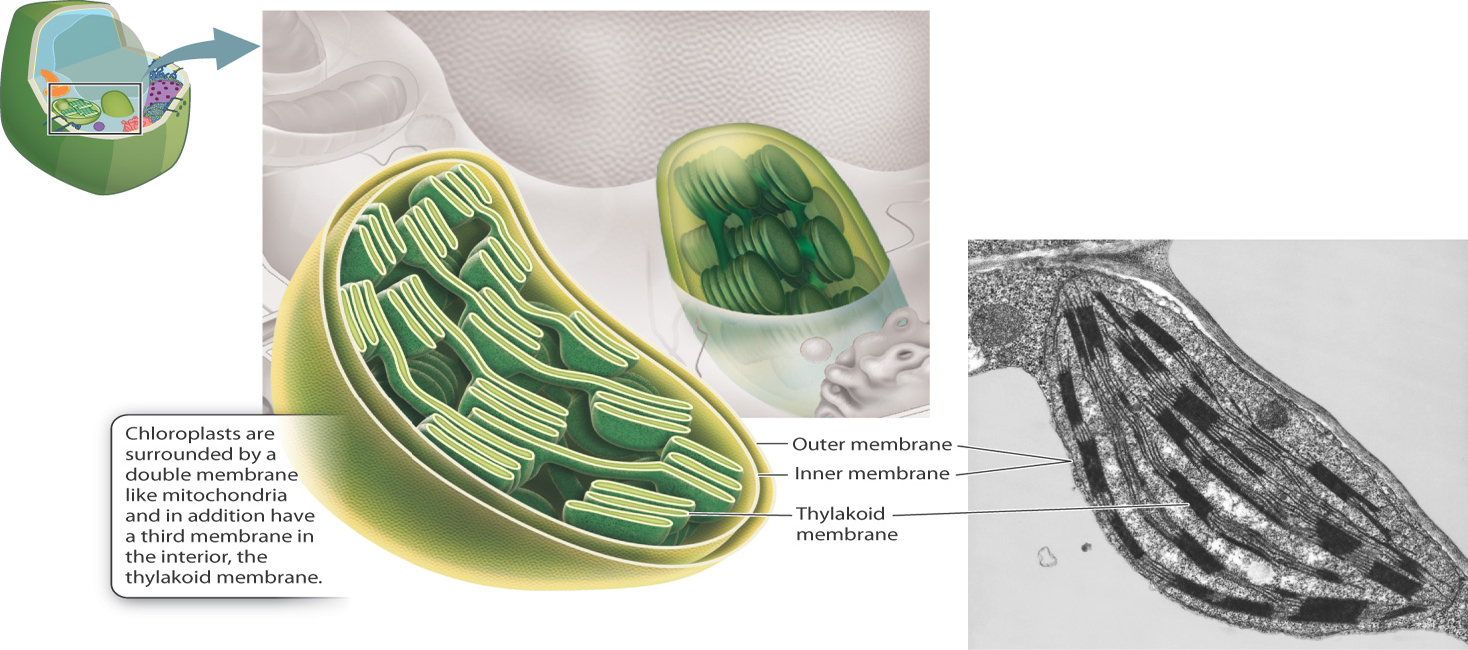5.5 MITOCHONDRIA AND CHLOROPLASTS
The membranes of two organelles, mitochondria and chloroplasts, are not part of the endomembrane system. Both of these organelles are specialized to harness energy for the cell. Interestingly, they are both semi-autonomous organelles that grow and multiply independently of the other membrane-bound compartments, and they contain their own genomes. As we discuss in Chapter 27, the similarities between mitochondrial and chloroplast DNA and the DNA of certain bacteria have led scientists to conclude that these organelles originated as bacteria that were captured by a eukaryotic cell and, over time, evolved to their current function.
5.5.1 Mitochondria provide the eukaryotic cell with most of its useable energy.
Mitochondria are organelles that harness energy from chemical compounds like sugars and convert it into ATP, which serves as the universal energy currency of the cell. ATP is able to drive the many chemical reactions in the cell. Mitochondria are present in nearly all eukaryotic cells.
Mitochondria are rod-shaped organelles with an outer membrane and a highly convoluted inner membrane whose folds project into the interior (Fig. 5.27). The inner mitochondrial membrane is where a proton electrochemical gradient is generated, and the energy stored in the gradient is used to synthesize ATP for use by the cell. In the process of breaking down sugar and synthesizing ATP, oxygen is consumed and carbon dioxide is released. Does this process sound familiar? It also describes your own breathing, or respiration. Mitochondria are the site of cellular respiration, and the oxygen that you take in with each breath is used by mitochondria to produce ATP. Cellular respiration is discussed in greater detail in Chapter 7.

5-23
5.5.2 Chloroplasts capture energy from sunlight.
Both animal and plant cells have mitochondria to provide them with life-sustaining ATP. In addition, plant cells and green algae have organelles called chloroplasts that capture the energy of sunlight to synthesize simple sugars (Fig. 5.28). This process, called photosynthesis, results in the release of oxygen as a waste product. Like the nucleus and mitochondria, chloroplasts are surrounded by a double membrane. They also have a separate internal membrane-bound compartment called the thylakoid. The thylakoid membrane contains specialized light-collecting molecules called pigments, of which chlorophyll is the most common.

Chlorophyll plays a key role in the organelle’s ability to capture energy from sunlight. The green color of chlorophyll explains why so many plants have green leaves. Using the light energy collected by pigments, enzymes present in the cytoplasm use carbon dioxide as a carbon source to produce carbohydrates. Photosynthesis is discussed in greater detail in Chapter 8.